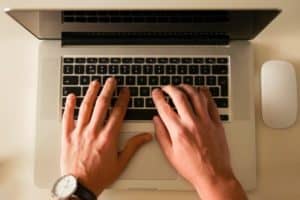This page contains affiliate links. This means if you a follow a link and make a purchase, at no additional cost to you, Humanitarian Careers will receive a commission. Thank you for supporting the site.
People can see from the news that world has many crises – from earthquakes to typhoons, from pandemics to wars. Everyone is also aware that there are economic crises in the world, as well as millions of people living in poverty. However, most people miss that these types of events actually require significantly different types of responses.
You may have heard of humanitarian assistance and development aid. Often the terms are used interchangeably. In fact, they are quite different. Let us explain:
Humanitarian aid is provided to address short-term and immediate needs after a crisis. It aims to save lives and assist people to rebuild. In contrast, development aid addresses long-term, systemic issues faced by poorer nations and aims to improve economic, political and social development in low- and middle-income countries.
Now we have definition out of the way, let’s explore the key elements of humanitarian aid and development aid, and why they are not the same…
Differences Between Humanitarian Aid and Development: An Overview
| Humanitarian Aid | Development Aid |
| Short-term | Long-term |
| Responds to a specific crisis | Aims for systemic change |
| Focused on immediate lifesaving aid | Work to alleviate poverty |
| Delivered in any country affected by a disaster | Delivered low and middle-income countries |
Humanitarian relief and development aid have similar objectives – reducing human suffering, but are in fact quite different. Humanitarian actions are short-term interventions that respond to a specific event. The aim of humanitarian work is to limit the immediate impact of a disaster or crises, save lives and rebuild so that people can return to their lives.
Development aid, on the other hand, is longer-term. Development interventions work to create systemic change that alleviates poverty and human suffering. It focuses more on political, economic and social improvements that can help reduce global inequality and improve people’s quality of life.
A key difference between humanitarian aid and development aid is under what circumstances the assistance is provided. Humanitarian aid is given after an event strikes a population that is unable to withstand its impact, causing significant damage and loss of life. This can happen in any country, rich of poor.
For example, humanitarian aid was delivered after the Fukushima disaster in Japan. Humanitarian aid was also distributed after the 2015 earthquake in Nepal. Both events required humanitarian responses in order to save lives and help people rebuild, but occurred in rich and poorer countries respectively.
In contrast, development aid is only provided in low- and middle-income countries. Poorer nations have a range of systemic issues resulting from, and caused by, under development. These countries require development aid to assist people living in poverty, as well as to help improve their governance, economies and societies.
Although many NGOs work on both development projects and humanitarian relief actions, there are several differences in how they operate these. Firstly, most NGO’s run development aid and humanitarian aid projects in different countries.
For example, many NGO’s run development projects in countries like Malawi, Kenya and the India. These poorer countries have high poverty rates and many social, political and economic issues. However, they have not had massive emergency events such as earthquakes, floods or conflicts. As a result, NGOs run development projects in countries like these.
In contrast, countries such as Syria, Iraq and Yemen receive urgent humanitarian aid in order to save lives, prevent further large-scale suffering and help people rebuild.
Another way NGO’s may divide their work between humanitarian aid and development work is how it is funded. Different donor agencies have project types that they fund. For example, ECHO, the humanitarian branch of the European Union, only funds emergency aid work. On the other hand, The US African Development Fund (ADF) only funds longer-term development work.
A final big difference NGOs have between their humanitarian aid and development work is in the staff they deploy. Humanitarian aid and development projects require different skills to run.
Development projects are also more likely to rely on national staff rather than expats as more time can be dedicated to building local capacity to manage projects. In contrast, emergency humanitarian projects often require international staff deployment as surge capacity is required to immediately establish the response.
Examples of The Differences Between Humanitarian Aid and Development Aid
Now that we’ve laid out the key differences between humanitarian action and development assistance, let’s explore some examples.
As we have said, humanitarian relief focuses on urgent life saving aid and assisting people to recover and return to their lives following a disaster. Humanitarian emergencies can occur in any country where a large-scale disaster affects many people who are not resilient against its impacts. Some examples of humanitarian responses include:
- 2015 Nepal Earthquake
- Typhoon Haiyan response, the Philippines
- Pakistan floods
- Japanese Fukushima incident
- 2004 Indian Ocean Tsunami
- Hurricane Katrina, USA
All of these events were sudden disasters that struck huge populations. International organisations enacted humanitarian responses with urgent assistance to save lives and limit the impact on people. After the initial response, focus was put on recovery and helping people rebuild their lives. These actions included all of the typical characteristics of humanitarian aid projects.
Importantly, we can also see from these examples that humanitarian aid is not only provided in poor countries but can be given in any nation where a disaster has had a huge effect on the population.
There are many examples of development assistance all over the world. Some organisations run specific development projects, such as Oxfam’s women’s empowerment work or WaterAid’s water and sanitation programmes. There are also donors such as the UK FCDO and the EU Development Agency That fund development aid across many countries.
As we can see by looking at most development projects, the timescale in which results are expected is extensive. Oxfam’s work to empower women will not change the role of women in societies in a year or two. These are multi-year projects aiming for systemic change.
Not all development aid is as long term as that. For example, WaterAid’s water and sanitation work. However, as it does not respond to a specific crisis, but aims to improve beneficiaries lives over many years, it is a good example of development assistance.
Another example of an agency focusing specifically on development aid is the UNDP. This United Nations agency only covers development work and is one of the leading international organisations leading on development assistance.
Many NGOs and international organisations do a mixture of humanitarian and development aid. Sometimes it can be hard to tell which projects come under which areas of intervention.
However, there are key differences between the two and many reasons why organisations generally do not mix humanitarian and development projects.
Humanitarian And Development Aid Online Courses
If you want to know more about the differences between humanitarian and development aid, we highly recommend the online course When Disaster Meets Conflict by the Erasmus University Rotterdam. It explores the complex nexus between disaster zones and wars and explains how different interventions, including both humanitarian and development aid, should be used. Follow the link to the course’s page to enrol.
For those wanting to learn more about development aid, we recommend taking the online course Sustainable Development in the 21st Century with Ban Ki-moon. Hosted by the former UN Secretary General, the online short course focuses on how development aid can make long-term and lasting change to people’s lives in poorer countries. Click the link to enrol.
Another online course that we recommend for those interested in both humanitarian and development aid is How To Design & Fund International Development NGO Projects. The course gives a fantastic overview of how both humanitarian and development interventions are designed, as well as what some of the key differences are.
Why Humanitarian Aid and Development Aid Aren’t the Same
There are many reasons for the differences between humanitarian aid and development aid. These include:
- Needs of the beneficiaries
- Length of time of the project
- Speed of the response
- Intended results of the intervention
- Types of staff and resources needed
- Role of national government
- Position of international community
Let’s break these down…
Firstly, a big reason humanitarian aid response and development projects are different is because of the needs of the people they are aiming to help. As we’ve said, humanitarian aid assists people affected by sudden disasters, crises and conflicts. These people need urgent lifesaving assistance and help to rebuild their lives.
In contrast, development aid helps people affected by longer-term issues. This means they need assistance in areas such as education, long-term livelihood support and sustainable improvements to their food security.
Another reason why humanitarian aid and development aid are different is because of the length of time of the intervention. Humanitarian projects aim to assist people urgently, reduce rates of death and suffering and help people return to their lives.
Development projects work for long-term systemic change in poorer nations. This mean humanitarian projects tend to be shorter than development aid interventions.
A big reason why humanitarian aid and development aid projects are not implemented in the same way is because of the speed in which assistance is needed. Humanitarian action responds to sudden crises and disasters where people need immediate assistance. Development work tackles longer-term issues in low- and middle-income countries and the results may not be tangible for years or even decades.
Humanitarian work and development assistance are also different because the expected results of the interventions differ. Humanitarian aid aims to assist people whose lives have been impacted by disasters and crises that have overcome their resilience. This means the intended outcomes of humanitarian projects are to limit the impact of the event and help people return to normal.
On the other hand, development aid looks at deeper political, economic and social issues in poor countries with projects aiming to address the unequal development outcomes between richer and poorer countries.
As a result of the difference between humanitarian aid work and development assistance, each type of intervention requires different staff and resources. Humanitarian aid requires staff skilled in emergency response, early recovery and life saving assistance. It also requires resources to be deployed rapidly, including medial relief, food and shelter.
Development aid, in contrast, needs staff able to work long-term on projects as well as resources available over an extensive period of time.
One of the major reasons for the difference between humanitarian action and development aid is the role of government. When humanitarian emergencies occur, the local government is often unable to respond. This means humanitarian assistance is often delivered outside of government structures.
Humanitarian aid can also be given in places no-longer under control of central governments, such as rebel held areas in conflict zones. This differs from development aid that usually incorporates government structures into the project or works to directly assist government ran development projects.
Finally, a main reason for the difference between humanitarian aid and development aid is the role of the international community. Different international organisations focus on humanitarian aid than do on development work. Also, humanitarian crises and development interventions have different international mechanisms, frameworks and bodies that govern how they are ran and what the outcomes should be.
Complex Humanitarian Crises
A complex humanitarian crisis is a sustained humanitarian emergency where a mixture of factors, such as poverty, conflict, natural disaster or medical emergency compound to create extensive human suffering. Complex humanitarian crises require a combination of humanitarian and development aid.
Some examples of complex humanitarian crises include:
Complex humanitarian crises involve many of the factors that relate to both the need for humanitarian action and development assistance. For example, unlike a humanitarian emergency, a complex crisis is sustained, often over many years. Complex crises also do not begin with a sudden event, such as earthquake or flood, but build-up overtime and move through many individual disasters and events.
Another way that complex humanitarian crises combine to attributes that require both humanitarian and development aid is the people affected need immediate life saving interventions, requiring humanitarian assistance, but also long-term systemic change – an important pre-request for development projects.
Complex humanitarian crises happen over extended periods of time, often many years.
However, because of the urgent need to assist and save lives, as well as the extensive impact on people’s lives and need to rebuild, they requite humanitarian assistance at times rather than development aid.
Importantly, responses to complex humanitarian crises can also have elements of development assistance within them. As the crises abates or moves phases, development work is put in-place in an attempt to move people out of poverty and create longer-term change, in the hope that the root causes of the crises can be addressed.
If you want to learn more about humanitarian aid, and how it differs from development assistance, explore our page on the top humanitarian online courses here.




